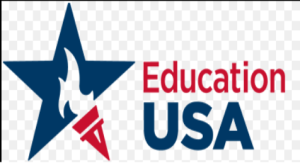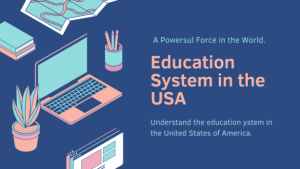Education in USA
- Introduction to Education in the USA
- Historical Background
- Early Education System
- Evolution over the Years
- Structure of Education System
- Elementary and Secondary Education
- Higher Education
- Public vs. Private Education
- Educational Standards and Assessments
- Challenges and Criticisms

- Innovations in Education
- Impact of Technology
- Diversity and Inclusion in Education
- Role of Government in Education
- Funding and Budgeting
- Future Trends in Education
- Conclusion
Education in USA
Education in the United States is a complex and diverse system that plays a crucial role in shaping the nation’s future. From its historical roots to its modern-day challenges and innovations, the education system in the USA has undergone significant transformations, reflecting societal changes and evolving educational philosophies.
Historical Background
Early Education System
The roots of formal education in the United States can be traced back to colonial times when education was primarily reserved for the elite. The first public school was established in Boston in 1635, paving the way for the development of a more inclusive education system.
Evolution over the Years
Throughout the 19th and 20th centuries, the education system in the USA underwent significant reforms, including the establishment of compulsory education laws and the expansion of public schooling. Influential figures such as Horace Mann and John Dewey shaped the direction of American education, emphasizing the importance of universal access and progressive teaching methods.
Structure of Education System
The education system in the USA is divided into several stages, including elementary and secondary education, as well as higher education. Elementary and secondary education typically spans from kindergarten to 12th grade, while higher education encompasses colleges, universities, and vocational schools.
Elementary and Secondary Education
Elementary and secondary education in the USA is largely decentralized, with each state responsible for setting its own standards and curriculum. Public schools are funded primarily through local property taxes, leading to disparities in funding and resources between affluent and low-income communities.
Higher Education
Higher education in the USA is renowned for its diversity and excellence, with thousands of colleges and universities offering a wide range of programs and degrees. The system includes public universities, private colleges, and community colleges, catering to students of varying backgrounds and aspirations.
Public vs. Private Education
One of the defining features of the American education system is the choice between public and private education. Public schools are funded and regulated by the government and are open to all students, regardless of their socioeconomic status. Private schools, on the other hand, operate independently and often require tuition fees, leading to differences in resources and student demographics.
Educational Standards and Assessments
In recent years, there has been a growing emphasis on educational standards and assessments to measure student achievement and hold schools accountable. Initiatives such as the Common Core State Standards and standardized testing have sparked debates over curriculum quality, teaching methods, and the role of standardized testing in education.
Challenges and Criticisms
Despite its strengths, the education system in the USA faces numerous challenges, including persistent achievement gaps, inadequate funding, and disparities in educational opportunities. Critics argue that the system fails to adequately prepare students for the demands of the modern workforce and perpetuates social inequalities.
Innovations in Education
In response to these challenges, educators and policymakers are exploring innovative approaches to teaching and learning. From project-based learning to online education, there is a growing emphasis on personalized instruction, technology integration, and experiential learning opportunities.
Impact of Technology
Technology has had a profound impact on education in the USA, revolutionizing the way students learn and teachers teach. Digital tools and online platforms have opened up new possibilities for collaboration, creativity, and access to information, transforming traditional classrooms into dynamic learning environments.
Diversity and Inclusion in Education
Diversity and inclusion are fundamental values in the American education system, reflecting the country’s multicultural society. Efforts to promote diversity and equity in education include affirmative action policies, multicultural curriculum, and support services for marginalized students.
Role of Government in Education
The federal government plays a significant role in shaping education policy through legislation such as the Elementary and Secondary Education Act and the Higher Education Act. However, education is primarily a state and local responsibility, with each state exercising considerable autonomy over its education system.
Funding and Budgeting
Funding for education in the USA comes from a variety of sources, including federal, state, and local governments, as well as private donations and tuition fees. Budgeting decisions often reflect competing priorities and political ideologies, leading to debates over resource allocation and funding equity.
Future Trends in Education
Looking ahead, the future of education in the USA is likely to be shaped by ongoing trends such as globalization, technological innovation, and demographic changes. Key areas of focus may include expanding access to high-quality education, closing achievement gaps, and preparing students for success in a rapidly changing world.
Conclusion
Education in the USA is a dynamic and multifaceted endeavor that reflects the country’s commitment to knowledge, opportunity, and progress. Despite its challenges, the American education system remains a cornerstone of society, providing students with the tools they need to thrive in an ever-changing world.
FAQs
- How does the American education system compare to other countries?
- The American education system is known for its diversity and flexibility, but it also faces criticism for its disparities in funding and outcomes compared to other developed nations.
- What role does standardized testing play in American schools?
- Standardized testing is used to assess student achievement and hold schools accountable, but it has been a subject of controversy due to concerns about overemphasis and its impact on curriculum.
- How are teachers trained and certified in the USA?
- Teacher certification requirements vary by state but generally involve completing a bachelor’s degree, passing licensure exams, and completing a period of supervised teaching experience.
- What are some challenges facing higher education in the USA?
- Higher education in the USA faces challenges such as rising tuition costs, student debt, and questions about the value of a college degree in the job market.
- How is education funded in the USA?
- Education in the USA is funded through a combination of federal, state, and local sources, with funding levels and allocation decisions varying widely between districts and states.






